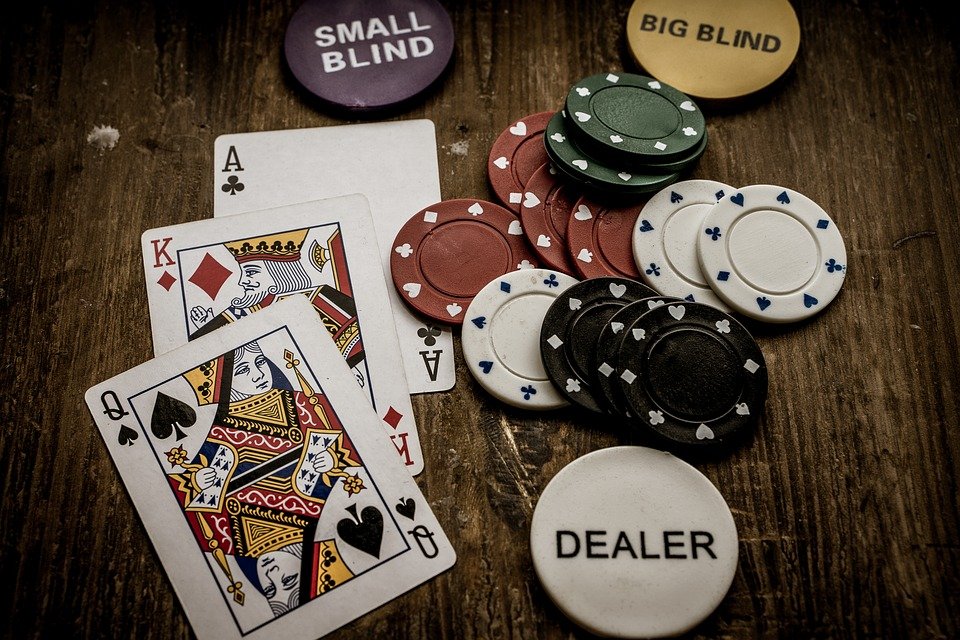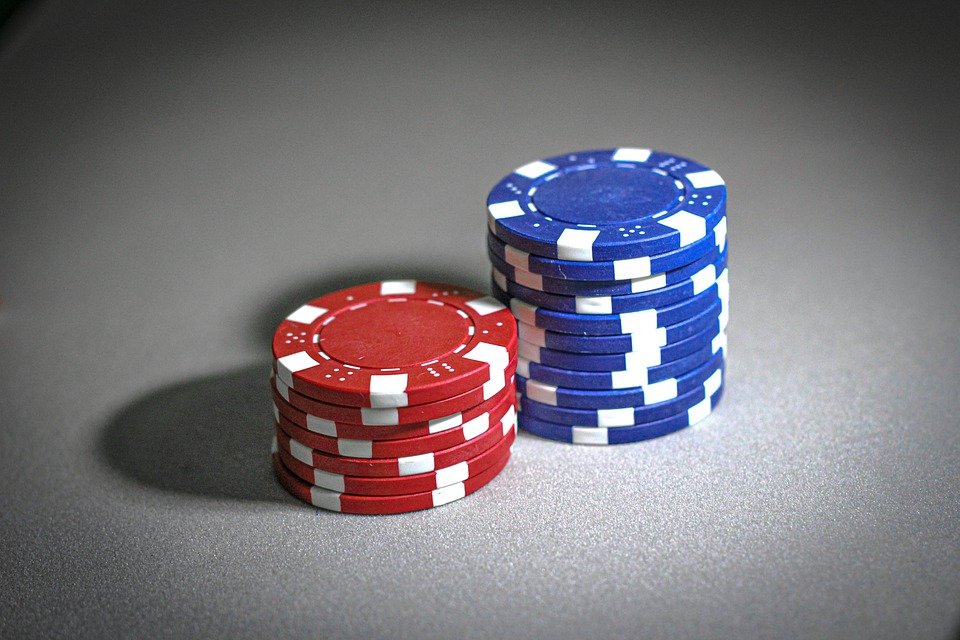Texas Hold’em
Texas Hold’em is a thrilling card game that has captured the attention of millions around the world. It requires skill, strategy, and a little bit of luck to come out on top. Here, we will delve into the exciting world of Texas Hold’em and provide you with an introduction that will leave you itching to join the game.
Texas Hold’em is a popular variation of poker that involves community cards and strategic betting. Each player is dealt two private cards, known as hole cards, which they must combine with the five community cards to create the best possible hand. The goal is simple – to win chips from your opponents by having the highest-ranking hand or by making them fold.
One of the most enticing aspects of Texas Hold’em is its simplicity. Unlike other variations of poker, such as Seven-Card Stud or Omaha, Texas Hold’em only requires two hole cards to participate in each hand. This makes it easier for beginners to grasp the fundamentals and get straight into the action.
The game starts with each player being dealt their two hole cards face down. Then, a round of betting takes place where players have the option to fold, call or raise based on their confidence in their hand. Once this initial round is over, three community cards are placed face up on the table. This is known as the “Flop.”
After another round of betting, a fourth community card called the “Turn” is revealed. This card adds more possibilities for players to form winning hands and intensifies both strategy and excitement at this stage of play. A final round of betting takes place before the fifth and final community card called the “River” is unveiled.
With all five community cards now on display, players can use any combination from their hole cards and those on the table to create their best possible hand. A final round of betting follows this stage. If multiple players remain after this round, a showdown occurs where each remaining player reveals their hand to determine the winner. The player with the highest-ranking hand claims the pot and adds chips to their stack.
Now that you have a brief introduction to Texas Hold’em, it’s time to dive deeper into the intricacies of the game. Understanding the order of play and knowing when to bet, fold, or raise can make all the difference in your success at the table. So sharpen your skills, gather your chips, and get ready for an exhilarating journey in Texas Hold’em!
Order of Play in Texas Hold’em
To determine the sequence of actions in Texas Hold’em, you need to understand the order of play. In this section, we’ll delve into the various stages of a game, starting with the dealer button. The sub-sections will cover the blinds, the pre-flop round, the flop, turn, and river rounds, and finally, the showdown.
The Dealer Button
The dealer button is a small disc used to determine the order of play in a game of Texas Hold’em. It signifies who the designated dealer is for each hand.
In Texas Hold’em, the dealer button moves clockwise around the table after every hand. The player to the left of the button acts first, followed by the rest of the players in a similar fashion.
The dealer button has an important role in ensuring fairness and equal opportunity for all players. It helps prevent any advantage that could arise from consistently acting last or first in every hand.
One interesting aspect about the dealer button is that it not only determines the order of play but also signifies who should be responsible for dealing out the cards. This adds an element of rotation and shared responsibility among the players.
Overall, the dealer button is an essential component of Texas Hold’em as it influences the dynamics and strategy of each hand. Its presence ensures that every player gets a fair chance to act, making the game more exciting and unpredictable.
The Blinds
In the exciting game of Texas Hold’em, the blinds play a crucial role. Without them, there would be little incentive for players to participate in every hand. They add an interesting twist to the game and keep the action flowing.
- The blinds are mandatory bets that ensure there is always money at stake in each hand.
- There are two types of blinds: the small blind and the big blind.
- The small blind is typically half of the big blind, and it is placed by the player sitting to the left of the dealer.
- The big blind is usually equal to the minimum bet at the table and is placed by the player sitting next to the small blind.
These blinds rotate around the table with each new hand, making sure every player has a fair chance of taking on this responsibility. They create an initial pot from which all subsequent betting takes place.
So, when you hear someone mention “the blinds” in a game of Texas Hold’em, you now know they play an essential role in determining how much money is at stake and keeping the game dynamic. Don’t underestimate their significance as you strategize your next move.
The Pre-Flop Round
During this round, players assess their cards and consider factors such as position, stack size, and opponents’ actions. The objective is to determine whether to play aggressively, conservatively, or fold altogether. Skilled players utilize their knowledge and intuition to gauge their chances of success.
Moreover, during the Pre-Flop Round, players can also employ various betting techniques to gain an advantage or disguise the strength of their hand. Some may opt for a small raise to test opponents’ reactions or choose to go all-in with a strong hand to intimidate adversaries.
Understanding the dynamics of this round is crucial because it lays the groundwork for subsequent rounds. Effective decision-making during this phase maximizes potential winnings while minimizing losses. Players must navigate through this round thoughtfully, tapping into both their analytical skills and gut instincts.
In essence, the Pre-Flop Round in Texas Hold’em serves as a pivotal moment where skilled players strategize and maneuver meticulously. It requires precision, adaptability, and astute observation in order to thrive amongst competitors vying for victory. So buckle up and get ready for an exhilarating journey in one of poker’s most thrilling stages!
The Flop, Turn, and River Rounds
During these rounds, players strategically evaluate their hand’s potential with the new community cards while also considering their opponents’ actions. Utilizing this information is crucial in making calculated decisions to stay in the game or fold.
The Flop provides an initial glimpse into what possible combinations may be created while leaving room for uncertainty.
As the game progresses to the Turn, players gain additional insight that can further enhance their hand or alter their opponent’s perception of it. This stage often requires careful observation and analysis to determine whether one’s hand has improved or if bluffing becomes necessary.
Ultimately, it all comes down to the River round – the decisive moment when fate can be sealed or gambled upon. With five community cards now revealed on the table, players must assess whether they have a winning hand or if they can intimidate others into folding through strategic betting tactics.
The Showdown
At the final stage of Texas Hold’em, known as ‘The Showdown’, players reveal their hidden cards and the winner is determined. This thrilling moment is when the strategies and skills employed throughout the game are put to the ultimate test. Each player anxiously awaits their fate as all eyes focus on the table, hearts racing with anticipation. The tension in the air is palpable as each card is unveiled, revealing a combination of luck and expertise.
In this crucial moment, poker faces are replaced with expressions of triumph or disappointment, as players discover whether their calculated risks have paid off. One by one, participants bow out gracefully or revel in victory until a single champion emerges victorious from ‘The Showdown’. The atmosphere is electric, capturing both the thrill of competition and the artistry of mastering this classic card game.
As ‘The Showdown’ begins, players gather around the table with bated breath. The tension builds, creating an aura of suspense that permeates every inch of the room. With eyes fixed firmly on their opponents, they carefully peel back their cards to reveal their hand to the world. It is a defining moment where fortunes can change in an instant – a pair can trump a high card; three-of-a-kind can outshine two pairs. This thrilling climax showcases not only individual talent but also a deep understanding of probability and psychology.
In this critical phase, etiquette reigns supreme – players remain composed and dignified regardless of their final outcome. Whether they have achieved a royal flush or simply hold a high card, participants respect each other’s playstyle and abilities. Though competitive spirits run high at ‘The Showdown’, sportsmanship prevails as players acknowledge both wins and losses gracefully.
‘The Showdown’ represents much more than just passing hands around a table; it embodies resilience, intelligence, and adaptability. Through meticulous observation and strategic execution, players navigate countless possibilities leading up to this decisive point in the game. It is a culmination of mental acuity, courage, and a touch of luck that defines the ultimate victor. ‘The Showdown’ remains an enduring symbol of the thrilling unpredictability that makes Texas Hold’em one of the most beloved card games in the world.
Strategies for Going First in Texas Hold’em
To gain an advantage in Texas Hold’em, strategize for going first. Employ aggressive betting, playing tight, and reading opponents. Each sub-section offers a solution to enhance your gameplay when you have the advantage of being the first to act. Embrace these strategies to maximize your chances of success in the game.
Aggressive Betting
Aggressive betting is a key strategy in Texas Hold’em that involves making large bets and raises. This approach can put pressure on opponents and force them to make tough decisions.
- Aggressive betting allows players to take control of the hand and dictate the pace of the game.
- By making big bets, players can potentially scare off opponents with weaker hands.
- Aggressive betting can also help to build bigger pots, increasing the potential winnings.
- This strategy requires careful assessment of hand strength and reading opponents’ reactions.
- However, it is important to strike a balance between aggression and caution to avoid becoming too predictable.
In addition to these points, it is worth noting that aggressive betting can be particularly effective when playing against passive opponents. These players are more likely to fold or call instead of raising, giving the aggressive bettor additional leverage. However, it is crucial for players employing this strategy to be mindful of their table image and adjust their approach accordingly.
When playing in earlier positions, aggressive betting can be especially advantageous as it allows players to narrow down the field early on. This can increase their chances of winning by reducing the number of opponents they have to contend with throughout the hand.
In summary, aggressive betting is a high-risk, high-reward strategy in Texas Hold’em. It involves making bold moves and putting pressure on opponents through big bets and raises. To succeed with this approach, players must carefully assess hand strength and read their opponents’ reactions while maintaining a balanced level of aggression.
Playing Tight
Playing tight in a game of Texas Hold’em is a strategic approach that involves being cautious with your starting hands. It is about playing only the strongest hands and folding weaker ones. This strategy allows players to minimize their losses and increase their chances of winning.
By playing tight, you are less likely to get involved in situations where you have a low probability of winning. This means that when you do play a hand, you are more likely to have a strong hand and increase your chances of winning the pot. Playing tight also helps to avoid making costly mistakes or getting caught in traps …

.jpg)
.jpg)




